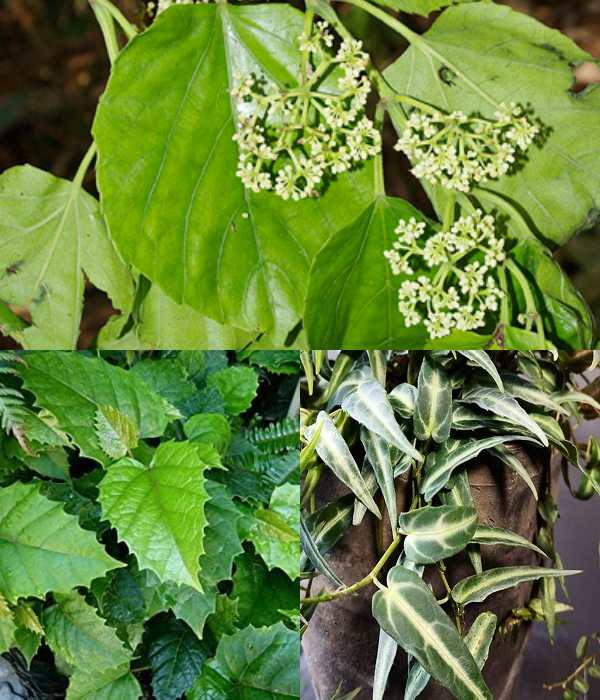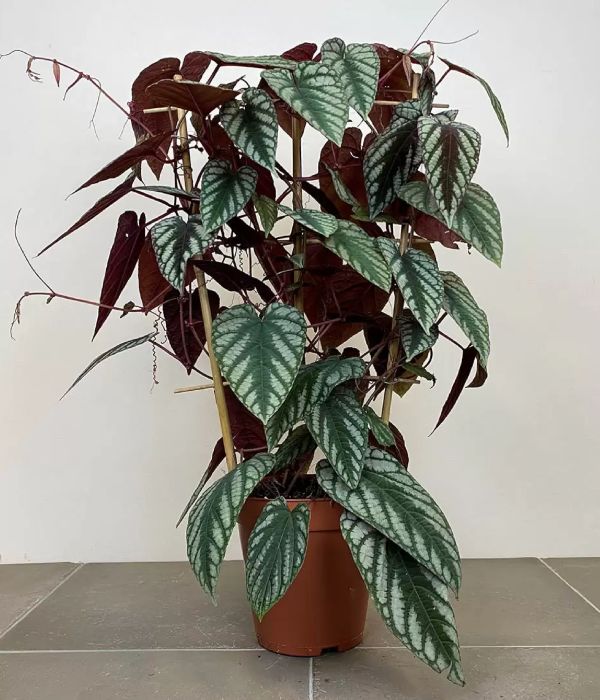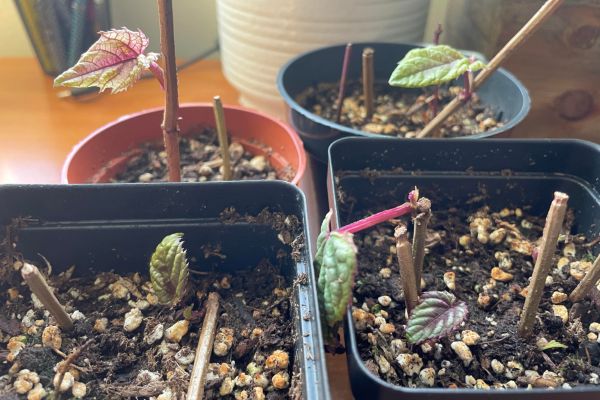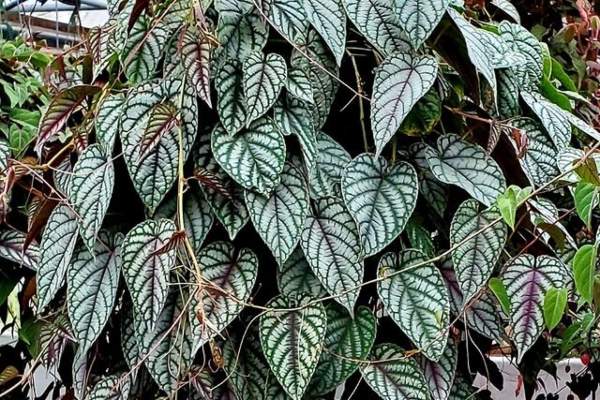Introducing Cissus Discolor, a stunning perennial houseplant popular for its vibrant, colorful leaves, and climbing nature. Its heart-shaped leaves are varicolored. The top side is a mix of green, silver, and purple, while the underside and vines turn deep burgundy to deep purple. This plant is often referred to as Rex Begonia due to its striking pattern and large, wide leaves. Surprisingly, Cissus Discolor is not related to the Begonia family. It belongs to the Vitaceae family and is native to Southeast Asia.
Here we discussed more about this fascinating plant exploring its different varieties, as well as some essential tips for growing and care.
Plant Description
Plant Type: Perennial, Vine, and Herbaceous
Scientifical Name: Cissus discolor Syn. Cissus javana
Family: Vitaceae
Common Name: Tapestry Vine, rex begonia vine
Native Area: Southeast Asia
Cissus Discolor Growth Pattern
Cissus Discolor, commonly known as the Rex Begonia Vine, is one of the prettiest foliage plants with pearlescent silver-toned patterns on green leaves with burgundy undersides. While maturing, this tropical vine produces tender curly tendrils that gracefully wrap around in an upward rise on a supporting tree or trellis with its bright red or pink stems. Well, Cissus Discolor can eventually grow to 5 to 6 feet tall. The plant does quite well in USDA zones 9 and 10a. Further, it can grow very well in higher zones if it is kept warm during the winter.
Varieties of Cissus Discolor

Amazon Jungle Vine
Amazon Jungle Vine, also called Cissus amazonica, is a beautiful vine of Brazilians native. It has small arrow-shaped leaves that are dual-toned with green on the top and burgundy, red, or pink underneath. It is a fast-growing plant with a twinning habit that wraps and climbs around a stake or a pole. Similarly, it thrives under low light and tolerates dryness.
Kangaroo Vine
Kangaroo Vine, previously known as Cissus oblongata, is a perennial climbing vine whose leaves are glossy and oval with serrated borders. It is native to Australia. Alike Amazin Jungle Vine, it is a fast-growing houseplant that thrives in a range of light conditions from low to bright.
Princess Vine
Princess Vine, also known as Cissus verticillate, is an evergreen perennial vine popular for its glossy heart-shaped leaves and thin tendrils. It is native to the Latin American region. Similarly, Princess Vine thrives in bright, indirect light and prefers for the soil to dry out between waterings.
Essential Care Tips for Cissus Discolor
Light
Cissus Discolor requires bright, indirect light. Growing these plants in low light means losing the beautiful colorations, especially the silvery ones. They will also grow slowly. On the other hand, while kept in direct sunlight, it will burn its leaves. So it’s better to keep the plant during the soft morning sun while avoiding the harsh rays in the afternoon.
Soil
It does well in rich, loose, and well-drained soil that holds moisture. You may use the standard houseplant potting mix, or, for extra drainage and nutrients, mix five parts potting with four parts perlite and one part compost.
Water
Water the plant when the soil surface starts to dry out. Make sure you do not let it become too dry in between waterings. So, must check the soil frequently. After watering, check cache pots and drip trays to ensure the plant is not sitting in standing water, which can cause root rot.

Temperature and Humidity
The temperature requirement for growing Cissuse discolor is 65 to 80oF. These plants prefer to be kept warm and have a low frost tolerance. When it comes to humidity, this tropical plant likes high humidity for the rich development of the dark green foliage, although it does have adaptation abilities to average indoor humidity.
Fertilizer
This evergreen vine will require some fertilizer for healthy development and more blooms. Feed with a balanced liquid houseplant fertilizer, diluted to half strength, once a month during the growing season.
Pruning
This plant requires no pruning or trimming. Although you can trim them once a year during the start of the growing season if you want to keep your Cissus discolor in optimal health.
Pests and Diseases
Cissus Discolor can be affected by houseplant pests like spider mites, whiteflies, and mealybugs. So, it is important to inspect the plants regularly. To prevent such problems, you could use a mix of dish soap and water, neem oil, and soapy water.
How to Propagate Cissus Discolor?
The propagation of a Cissus Discolor is relatively easy. The best time to propagate this plant is during its growing season, spring or summer. Here are the steps you may apply while propagating your plants.

- First, take out a sharp knife or sterilized pruners and a little ethanol to disinfect it. Next, cut off a 6-inch-long tip of the stem with several leaves attached.
- If possible, do the cutting below a terminal node and remove the lower half of the leaves. Although this is optional, you can dip the leaf-cutting nodes in growth hormone.
- Place the cutting in a glass of water such that the lower half of the leaf nodes of the stem are below the water line.
- Then, place the cutting in a moistened potting mix such that the nodes of the lower leaves are below the soil surface.
- Keep the container in bring indirect sunlight. Change the water in the jar if it becomes cloudy.
- Keeping the soil moist but not soggy. In a few weeks, you will have new growth. And you will have a new Cissus discolor.
Conclusion
In conclusion, Cissus Discolor, or the Rex Begonia Vine, is a very beautiful and elegant indoor plant with heart-shaped leaves, which come in different colors varying from green to silver, purple, to burgundy-colored. It is a tropical perennial that comes from the Vitaceae family. Although not a real Begonia, the plant has a nice climbing nature that makes it much loved for indoor gardens. This includes bright indirect light, well-drained soil, and a warm, humid environment. With this kind of care, it is definite that Cissus Discolor will thrive and give a much-needed pop of color to your home. Either in terms of the uniqueness of its foliage or the ease by which it is propagated, this plant will turn out to be beautiful and rewarding for any plant collection.
Also read Essential Growing and Care Tips for Pregnant Onion Plant
Frequently Asked Questions
1. What are the features of Cissus Discolor?
Cissus Discolor has vibrant, colorful heart-shaped leaves in varicolored. The top side is a mix of green, silver, and purple, while the underside and vines turn deep burgundy to deep purple.
2. What is the ideal location to plant Cissus Discolor?
Cissus Discolor requires bright indirect light, and well-draining soil that holds its moisture. The temperature requirement for growing Cissuse discolor is 65 to 80oF.
3. Is Cissus Discolor easy to propagate?
Yes, Cissus Discolor is easy to propagate. The best time to propagate this plant is during its growing season, spring or summer.
